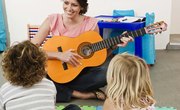Semantics is the knowledge and comprehension of words and the relation of words to each other. Students who experience difficulties with words and comprehension in reading may show difficulties in writing and speaking; this may be observed during attempts to form plurals, verb tenses, subject and verb agreement and possessive nouns and pronouns. Children may also have trouble understanding relationships between words in sentences and paragraphs. Some ideas and activities can support improvement in using and understanding words.
Listening, Processing Difficulities
Listening skills and processing new information can be a struggle for students who have difficulties in understanding sentences, paragraphs and longer reading passages. Weak listening skills prevent students from following oral directions, specifically directions given in steps. Also, slower processing skills of oral information as well as new information presented in writing creates additional difficulties for students with semantic learning difficulties. These students often need additional time to process information compared to same-aged peers in the classroom.
Comparitive Questioning
Teachers can help improve students' semantic learning through comparison. For example, if discussing a story, the teacher can ask questions comparing the characters, such as which characters would most enjoy certain activities such as reading. Another comparison technique is to ask questions about opposites. For example, which character in the story is older; or how is the weather in the story different than the weather here today?
Listening and Sorting Activities
Teachers can use listening and sorting activities for improving students' listening skills, which further supports semantic learning. For example, provide students with three-step movement directions. Ask for a student volunteer to act out the movement in front of the class. The "Simon Says" game is another listening activity that requires students to apply what is heard. Teachers also can implement activities requiring sorting and classifying. Students can group pictures according to similarities (wild animals, places with mountains, animals as pets).
Word Card Activities
Additional activities include matching picture and word cards, identifying homophones, making compound words with flashcards, making compound words with picture cards, making sentences with picture and word cards, matching picture cards with word cards, creating lists of word families by categories (foods, furniture, drinks), identifying synonyms for common words by listing, matching pronouns with nouns, and rephrasing simple sentences and paragraphs. These activities can be done independently or as a whole group.
Related Articles
References
Writer Bio
Carole Bruzzano has been a freelance writer since 2003. Her writing has appeared in magazines such as "Social Work Today" and "Tall Poppies," as well as the "Penwood Review" poetry journal. Bruzzano holds a Bachelor of Arts in fine arts from Fairliegh Dickinson University and a Master of Education in administration from Saint Peter's College.











